How To Make The Perfect Pour Over Coffee

Despite all the hype within the world of coffee connoisseurs, the pour-over method is a surprisingly simple way of brewing to get that jumpstart of excitement to start your day. As is natural with the passing of time, people found ways to complicate this easy method. But fear not, we are here to tell you all the things to consider when making your perfect cup of pour-over coffee.
History of the Pour Over
Before we get into the nitty gritty, first some background. The pour-over method of brewing coffee was invented by German housewife, Melitta Bentz, in 1908. Before the coffee filter as we know it today, coffee was typically brewed by adding coffee grounds to a boiling pot of water and stirring. When enough coffee grounds dissolved in the water, a layer of unused coffee ground was left at the bottom of the pot and the drinkable coffee was above it. Bentz grew tired of the arduous task it was to clean the coffee pot as well as the annoying feeling of ground-up coffee beans that snuck into her cup, so she got to experimenting. After much trial and error, she eventually resorted to separating the coffee grounds from the rest of the coffee solution by placing them into a piece of paper from her son’s notebook and pouring hot water over the grounds. Mesmerizingly, she watched as the coffee solution dripped to the other side of the paper and into her cup without a single spec of coffee bean. Best of all, cleaning up was a breeze, changing the course of coffee history for decades to come.
Enough about history. Let's make some coffee!

The Coffee
Quality is important. So its no surprise that behind every great cup of coffee are freshly roasted coffee beans. Interestingly enough, coffee that you buy at the supermarket sometimes sits on the shelf for a couple of months. The quality of the coffee then begins to deteriorate the longer it sits on the shelves. Find a roaster you love and support their business to ensure that you're drinking good quality coffee every single morning.

The Essentials
To make a cup of pour-over coffee you will need:
Coffee grinder - If you want the freshest tasting coffee, you can't beat grinding your coffee yourself. Use an electrical or hand grinder that can deliver a consistent grind. You can also purchase ground coffee that was freshly roasted.
Coffee Filter - In our recipe we're using the Kalita wave 185. Leaves a clean taste and it fits perfectly in the grooves of the origami dripper.
Coffee dripper & Server - You can find many great drippers out there. One of our favorites is the award winning Origami dripper from Japan
Coffee scale - Get an affordable coffee scale with timer. We like The Hario V60 Drip Coffee Scale
Gooseneck Kettle - Gooseneck is key. It will give you more control on the pour.

The Ingredients
18g Coffee beans
235g of water - 196-200 degrees Fahrenheit
Note: this recipe is based off a 1/13 ratio. Great for those who like a stronger/bold cup of coffee. if you like a lighter/fruitier cup of coffee, try a 1/16 ration (14.5g of coffee).
The Recipe
1. Boil water in your kettle to 196-200 degrees Fahrenheit
2. Place the paper filter inside the dripper and preheat/wet the filter with hot water. (this is to reduce the likelihood of having paper micro-particles sneaking into your cup). Dispose of water.

3. Place coffee server and dripper onto scale and pour coffee grounds into the damp filter.
4. Pour the hot water over the coffee in intervals of 5-7 seconds and in a circular motion (this is to ensure that the water spreads evenly across the coffee and that trapped carbon dioxide gas escapes from the grind). For maximum results, lightly stir the mixture with a small spoon after the first pour. Take your time. Pouring a slower coffee in the beginning will deliver a sweeter and cleaner cup of coffee. You can always start to speed it up towards the end. Stop once your scale reads 235g of water.

5. Grab a small spoon/stirrer and give the coffee-water mixture a stir as it works its way through the filter
6. Once the coffee makes its way through the filter, it's time for your favorite part. Pouring yourself a cup and taking that first sip. Enjoy!




